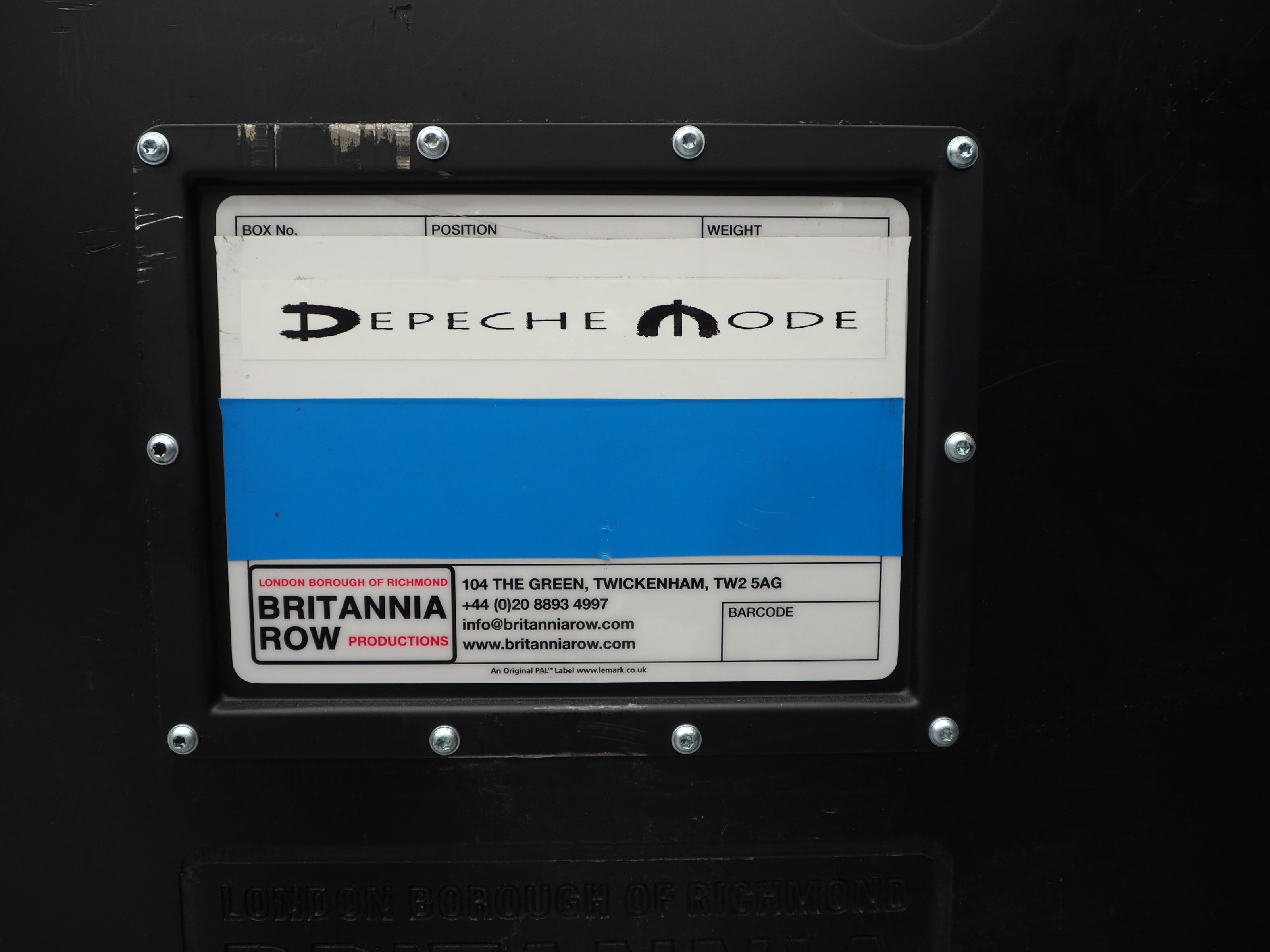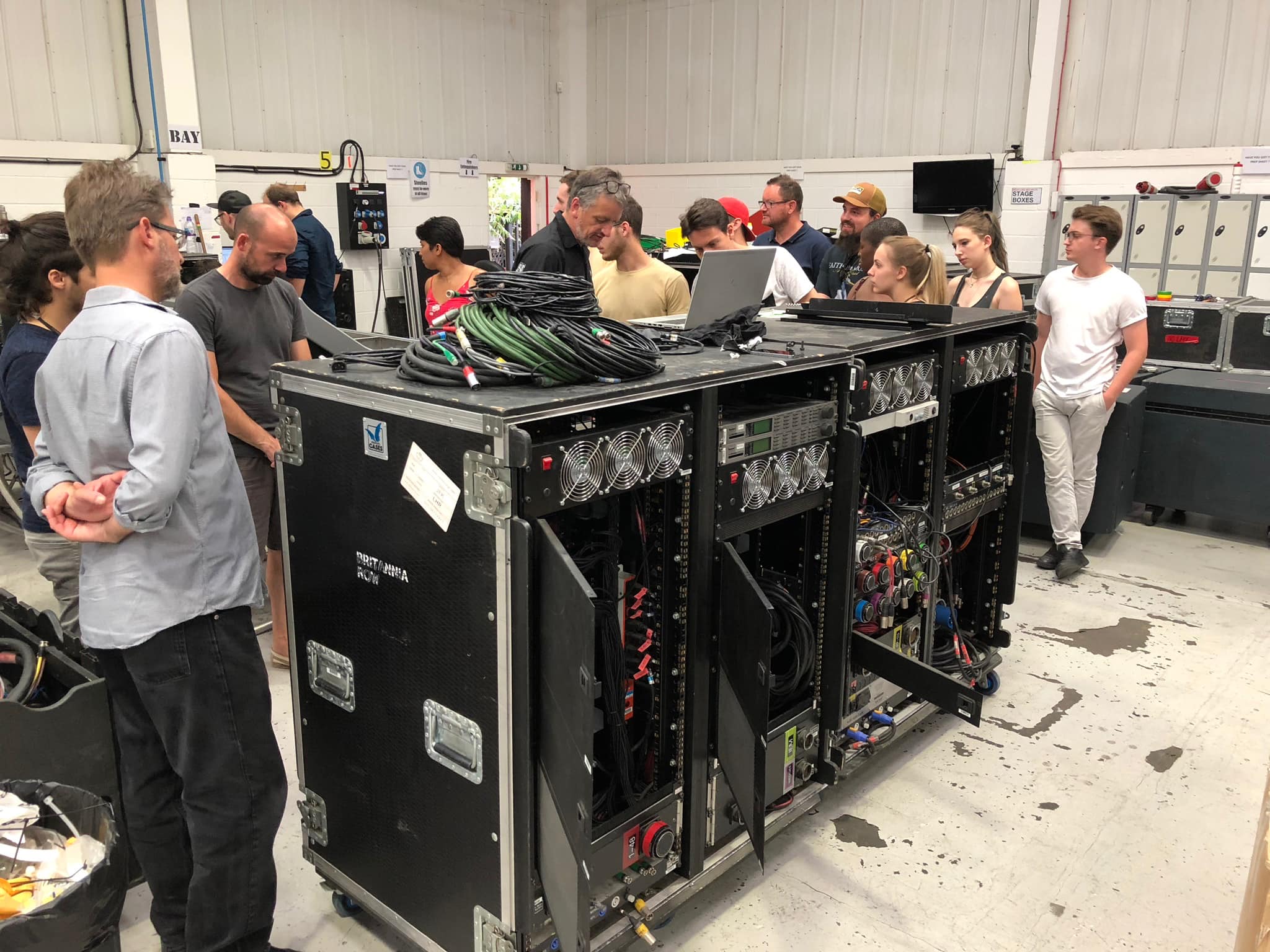Live sound with Britannia Row Productions
Live and studio sound engineering do have their differences, but a solid grounding in the fundamentals of audio engineering is required for both. Last week, Abbey Road Institute visited Britannia Row Productions to compare techniques and equipment from both audio worlds…
If there is an equivalent to Abbey Road Studios in the live sound world, Britannia Row Productions is it. “Brit Row” (as it’s affectionately known) began life as Pink Floyd’s recording studio in 1975, branching out to renting out touring equipment shortly after. Today, Britannia Row puts on some of the biggest live events in the world, using the latest in audio technology.

Nick (far left) and Marcel (middle) begin the tour at Britannia Row
On hand to guide us through all that gear was General Manager Nicola Amoruso and Marcel van Limbeek, Manager and Training Instructor. As a special treat, Britannia Row left out the massive rig that just came back from Depeche Mode’s world tour for us to check out!
Marcel has been running desks both live and studio with the legendary Tori Amos for over 20 years. He knows both worlds very well, and gave us the low down on how they differ:
What’s different in live sound
Microphones and speakers are in the same space
There’s a reason the control room is separated from a studio’s live space: microphones and speakers don’t mix. Place them too close together and at the wrong angle and you’ll soon be overwhelmed by the unearthly howl that is feedback
The room might not sound great
It’s only recently that music venues have been built with good acoustics in mind. Studios like Abbey Road are chosen for great-sounding rooms. Live? It’s hit and miss.
Directional microphones only, and always up close
Great-sounding venues do exist. The problem is that taking advantage of those acoustics will almost inevitably cause that dreaded feedback. Directional microphones are best for rejecting room tone. Especially when they’re right up next to the instrument.
The pressure is always on
There is no opportunity for failure at live shows. No 10 minute breaks to restart the computer or replace a dodgy microphone. On the technical side, everything must be absolutely bullet-proof right from the start.
Technical vs creative
Your technical problem-solving skills as a live sound engineer are incredibly important. Don’t be fooled; this often requires thinking of some wildly creative workarounds! Remember: there is zero room for failure. A live show isn’t the place to experiment.
More desks, more engineers
Most live events have at least two engineers and two mixing desks. You’ll find the first one at front of house taking care of the overall sound of the music. The other pair are usually back stage, looking after the monitors for the musicians.
Ready to see where a solid grounding in audio will take you? Check out our Advanced Diploma in Music production and Sound Engineering, or contact us for more information.



